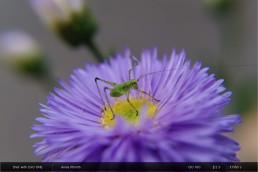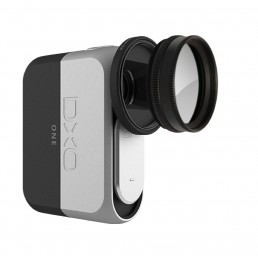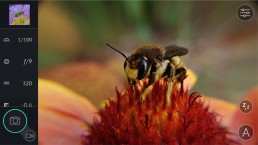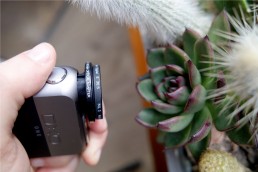Macro photography Accessories
Look for original angles and be patient.
Play with your aperture settings to adjust sharpness.
Macro photography involves taking pictures of small subjects, typically plants and animals. This style of photography requires observation, patience, the right light, and a bit of technical skill.
In terms of equipment, you can add close-up lenses with a diameter of 30.5 mm or more to your DxO ONE by using a DxO ONE accessory called the DxO ONE Optical Adapter.
With macro photography, you’re much closer to your subject, so the focus area is smaller. To play with depth of field, use aperture priority (A) mode and gradually close the lens aperture on your DxO ONE, depending on the level of detail you want.
(Photographer Anais Phinith)
If you’re shooting handheld, pay attention to your shutter speed to avoid motion blur if the subject moves. In these conditions, don’t go below 1/125 s. You’ll have to find a good compromise among a high shutter speed, which lets you capture a sharp photo; an aperture that’s closed enough to maintain sharpness; and a sensitivity setting that’s low enough to produce a high-quality image.
When shooting with a slow shutter speed (1/30 s or less), use a tripod, which lets you focus with a high degree of precision. Turn on the timer function or use your DxO ONE in Wi-Fi mode to take your photo remotely; this will prevent any movement that could cause blurring.
If you’re having a hard time focusing the image, switch to manual focus (M) mode so you can adjust the sharpness yourself using the ruler and the zoom-in magnifying glass on your smartphone’s screen.
Look for an original composition and use a variety of angles. Thanks to its small size, your DxO ONE can go everywhere.
(Photographer Florence AT)
Subjects with high contrast create relief. Spot Weighted mode is the best adapted for this kind of photography. By analyzing a small area at the tip of your finger, it lets you take backlit images. Use backlighting, for example, to showcase a leaf’s transparent texture. And don’t hesitate to get down on the ground to give your subject added relief.
To lighten a shadow, use a small reflector. A simple, homemade white sheet of paper works well, and you can also use it to cover up an ugly background.
For your archives, consider labeling your photos with the names of the plant and animal species you photograph.
Finally, out of respect for nature, don’t disturb the environment in which you are photographing.






 Download page
Download page